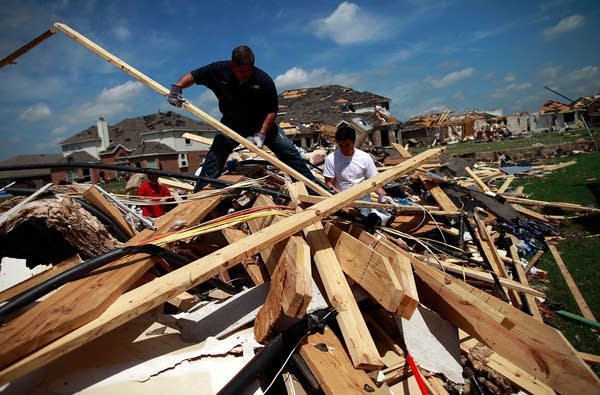Tornado warnings: Is the technology reliable?

Violent tornadoes spun through Texas Tuesday as sirens blared and the National Weather Service warned citizens in the bluntest language possible--calling it a "tornado emergency."
Those warnings must have saved some lives because there were remarkably no fatalities or serious injuries. That's why when the cities of Albert Lea and Duluth each tested their warning sirens earlier this week and they failed, city officials quickly went to work to figure out why.
We were wondering: Can we rely on technology to prepare for severe weather?
Minnesota meteorologist and author Paul Douglas will join The Daily Circuit Friday to talk about the upcoming severe weather season and the technology used to predict the storms.
"A convergence of meteorological and socioeconomic trends has left America more vulnerable to a catastrophic tornado; a single long-lasting tornado hitting a major urban center -- potentially putting thousands of lives at risk," Douglas in the Huffington Post. "It's too early to know if it's an aberration or a trend -- but in recent years some of the largest, most destructive tornadoes have struck east of the Mississippi River, hitting more densely populated cities and suburbs. There's no clear-cut evidence we're seeing more violent tornadoes, but 'Tornado Alley' appears to be expanding north and east."
Create a More Connected Minnesota
MPR News is your trusted resource for the news you need. With your support, MPR News brings accessible, courageous journalism and authentic conversation to everyone - free of paywalls and barriers. Your gift makes a difference.
